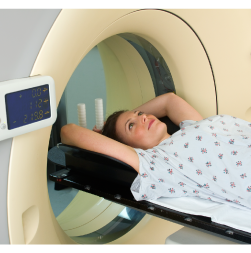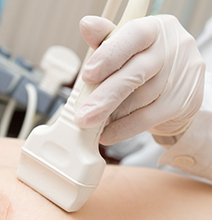MRI (magnetic resonance imaging) of the breast

MRI uses a powerful magnet to capture high-resolution digital images of the breast.
For this reason, the person examined cannot carry any metal (for example piercings or metallic screws).
Metal prostheses need to be assessed by a doctor to see if their metal reacts or not with the magnet.
MRI creates images with much higher resolution than mammograms, and can identify cancer at very early stages.
As result, it is a technique of crucial importance for the surveillance of high-risk women, especially in cases of fast-developing hereditary breast cancers.
Because of its ability to identify fluids in organs and tissues, it can also distinguish between different structures, for example between a cancerous nodule and a fibrocyst – when normal breast tissue feels lumpy or rope-like in texture.
Limitations:
- It cannot identify micro calcifications, so needs to be used with mammograms





